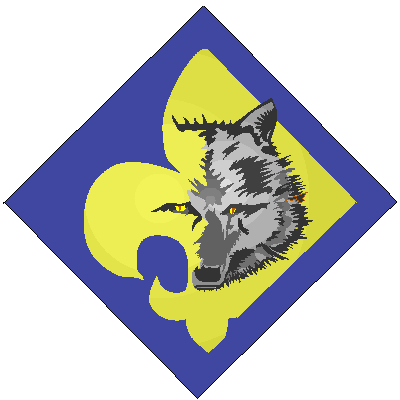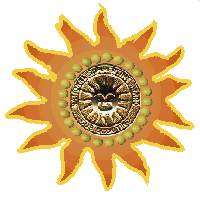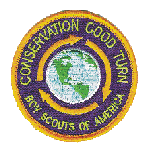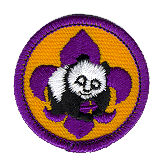Q.
I have been appointed Coordinator for new Cub Scout and Adult Leader recruitment
for our local Pack. What should I do?
A. Congratulations,
it's wonderful that you are getting started this early. Anything you can
do in April or May will make things easier in September and reduce pressure
and tears in December. I hope that some of the kids that you recruit this
fall become Eagle Scouts down the road. You will have started them on that
trail.
SCHOOL RELATIONS:
Cement relations between the pack and the school you will be recruiting
from. Service projects, cookies for the school secretary, talks with the
principal, relations with volunteer coordinators, school site committee,
parent associations. Sell the facts that Cub Scouting is an educational
program and that we stand strongly for ethical behavior and character development,
that the Webelos Activity Badge program compliments the grades 4 and 5
curricula. Be visible, helpful and cooperative. You will need to set dates
and get permission to recruit from the school.
DISTRICT
AND COUNCIL HELP. Check with your DE and District Roundup Coordinator.
They have a packet of things like flyers, posters, yard signs, Parent Guides,
New Leader Guides and Bobcat Trail pamphlets for you. Get a good supply
and be ready to use all of it. The district can also supply some human
help like the DE going into the school and doing a rah rah talk to the
kids, great, but some parent from the school should set it up and be there
too (preferably in a Scouter uniform.) In August, the district holds a
Roundup kick-off - be sure to attend with some of your key helpers.
START PLANNING
NOW. State your objective: hopefully to recruit DL's and other leaders.
Collect your resources: get commitments from every leader in the pack to
be there. Delegate jobs like putting up posters and yard signs, greeters
at the door, entertaining the kids while the most persuasive person in
your pack sells the program to the parents. Line up displays of pinewood
derbies, etc. and especially camp photos. If someone can create a Power
Point presentation of your activities, that's a winner. Check for help
from neighborhood Scout troops. Don't wait to get these things lined up.
Do it now!
MAKE AND
ACTIVITY SCHEDULE. Get your annual plan down on paper and have copies
on hand for your recruiting night. Hopefully it includes all sorts of neat
activities. Have a budget so you can inform parents what it's going to
cost them.
BE VISIBLE.
Your
pack should do things during the summer that will be seen. Things like
parades, picnics, rainwater regattas in a local park, media coverage will
all help sell your pack program. Make sure that your uniforms, flags, banners
etc. are seen.
Remember there probably is a sizable
Home school population in your area. Typically they favor Scouting. Let
them know you exist.
RECRUITING
FLYERS. If you can distribute flyers, give some thought on what
you want printed on them. Certainly the time and place of your pack's recruiting
night, phone numbers and email in case they can't make it. How about registration
fees, leader's names, program highlights? What do you think your neighbors
will want to know before they show up? The Council will print your message
on the flyers if you have the copy ready when your order them.
LOOK SHARP.
On
your recruiting night, try to look well organized. Have the room set up
well in advance. Everybody should know their roles and be on hand a bit
early. When the new folk arrive, they should be greeted at the door or
even the parking lot. Give them registration forms, and other handouts
and have them sit by grades so you can easily form dens later. Be ready
for one parent to show up with kids in more than one grade. Be ready for
siblings of all ages. Start things off with a stirring flag ceremony. A
Webelos den or a Boy Scout patrol probably. Pull out all stops. It's your
first impression. You may want to do a couple fun sparklers to get things
rolling, especially if you have a good song leader or cheer master in your
your pack. Tell them about your program. I have seen Webelos do great jobs
reporting on summer camp and other activities. If possible separate the
kids from the parents and then sell the program to the adults. Don't be
negative. Sell the values of the program. Sell the ideals. I strongly believe
that most parents love their kids and are willing to put out a lot of time
and effort it they believe your program is worth it. Show them that it
is. Let them know that everyone will be asked to help and that you expect
them to say yes. Tell them about support like training and literature.
FULFILL THE
PROMISE. Make sure that before the evening is over, both boys and
adults are invited to some special activity. Our council runs a special
open house at our Cub Camps in October just for new recruits called the
Stampede. The kids come and shoot bows and arrows and bb-guns and other
stuff and the parents stand around and gawk. We promised those kids that
Cub Scouting is fun and adventure, let's make sure they get some as soon
as possible.
COMPLETE
THE PAPER WORK. Before they leave collect registration forms and
money. Turn it in as soon as possible so that each boy is covered by your
pack insurance and starts getting his Boy's Life on time. Do follow up
calls to those who didn't make it.










